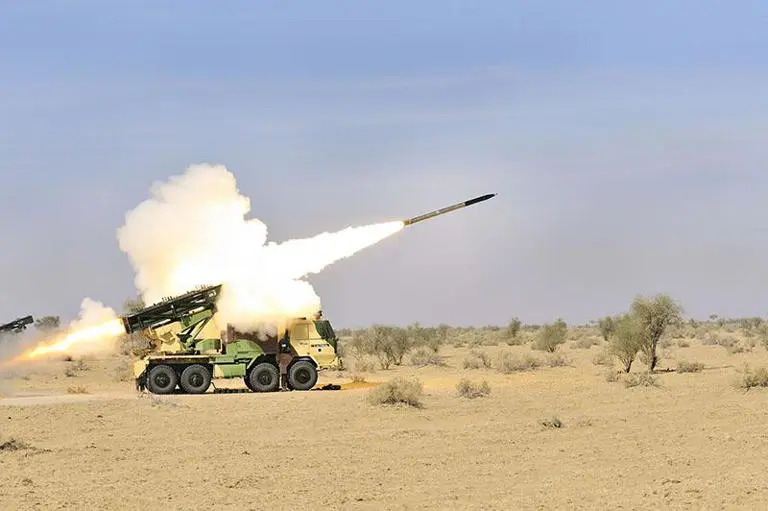
India accelerates its artillery modernization with six new Pinaka rocket regiments set for completion by 2026
The Rise of Pinaka: India’s Artillery Renaissance
In a decisive move to bolster its long-range firepower, the Indian Army is on track to induct six additional regiments of the Pinaka Multi-Barrel Rocket Launcher (MBRL) system by 2026. Two regiments have already been raised and deployed, while the process of equipping and training for two more is actively underway.
The Pinaka system, developed by the Defence Research and Development Organisation (DRDO), is designed to replace the aging Soviet-era Grad BM-21 systems. Each regiment comprises three batteries, with each battery fielding six launchers. A single launcher can unleash 12 rockets in just 44 seconds, saturating a target area of 1,000 by 800 meters.
This rapid-fire capability, combined with extended-range variants capable of striking targets up to 75 km away, makes Pinaka a formidable asset in India’s artillery arsenal. The regiments are being strategically deployed along sensitive borders with China and Pakistan, reinforcing India’s deterrence posture amid rising regional tensions.
Indigenous Might: DRDO’s Technological Triumph
The Pinaka system is a shining example of India’s push for defense indigenization. The Ministry of Defence signed a ₹2,580 crore contract in 2020 with Indian firms BEML, Tata Power, and Larsen & Toubro to produce the six new regiments. This deal followed the Galwan Valley clash, underscoring the urgency of strengthening India’s border defenses.
Technically, the Pinaka launcher is mounted on a high-mobility Tatra truck, offering excellent battlefield mobility. It features advanced inertial navigation systems, GPS guidance, and an Automatic Gun Alignment and Positioning System (AGAPS), enabling precise targeting and rapid repositioning after firing, a critical “shoot-and-scoot” capability.
The system’s evolution includes the Pinaka Mk-I (40 km range), Mk-II (60 km), and the Extended Range (ER) variant (up to 90 km). DRDO is also developing Pinaka-3 and Pinaka-4, with ranges of 120 km and 300 km respectively, signaling a future-ready artillery force.
Each rocket can carry a variety of warheads, including high-explosive fragmentation, anti-tank, incendiary, and cluster munitions, making it adaptable to diverse combat scenarios.
Strategic Impact: Firepower with a Purpose
The induction of these regiments is not just about numbers, it’s about strategic transformation. Once all six regiments are operational, the Indian Army will field 114 launchers, 45 command posts, and over 330 support vehicles. This scale-up enhances India’s ability to deliver concentrated firepower across multiple fronts.
The Pinaka system’s deployment along the Line of Actual Control (LAC) and the Line of Control (LoC) sends a clear message: India is prepared to defend its territorial integrity with speed, precision, and indigenous strength. The system’s mobility and rapid deployment capabilities make it ideal for mountainous and high-altitude warfare, where traditional artillery faces logistical challenges.
Moreover, the Pinaka regiments are a cornerstone of India’s broader defense modernization strategy, which includes integrating AI-driven targeting, satellite-based surveillance, and network-centric warfare capabilities. As India eyes a 22-regiment goal for Pinaka systems, the current expansion is a critical step toward that vision.
Conclusion:
India’s rocket power surge, embodied by the Pinaka regiments, is more than a military upgrade, it’s a declaration of technological confidence and strategic intent. As the 2026 finish line approaches, the fusion of indigenous innovation and battlefield readiness positions India as a formidable force in the evolving security landscape. The roar of Pinaka is not just heard on the borders, it echoes across the corridors of global defense discourse.
Stay updated with the latest news on Rapido Updates. Keep yourself updated with The World, India News, Entertainment, Market, Automobile, Gadgets, Sports, and many more
Also read – Ghost in the Sky: How the B-2 Spirit Redefined Modern Warfare with Unseen Power